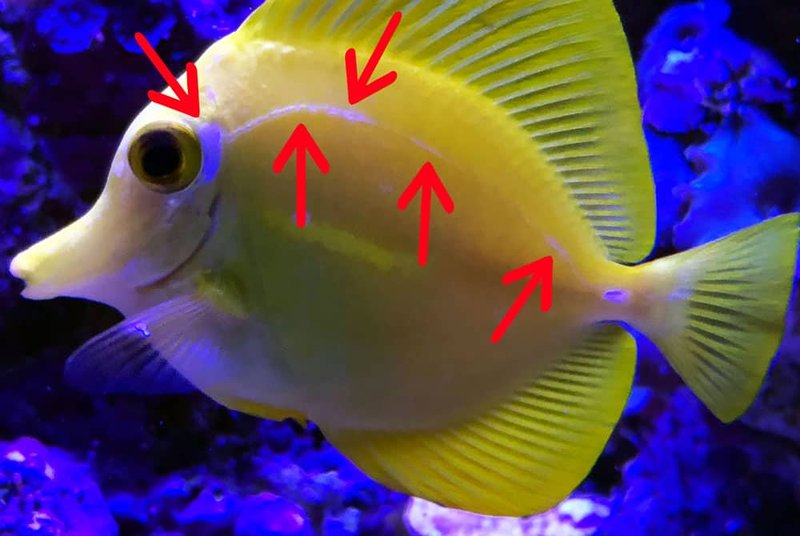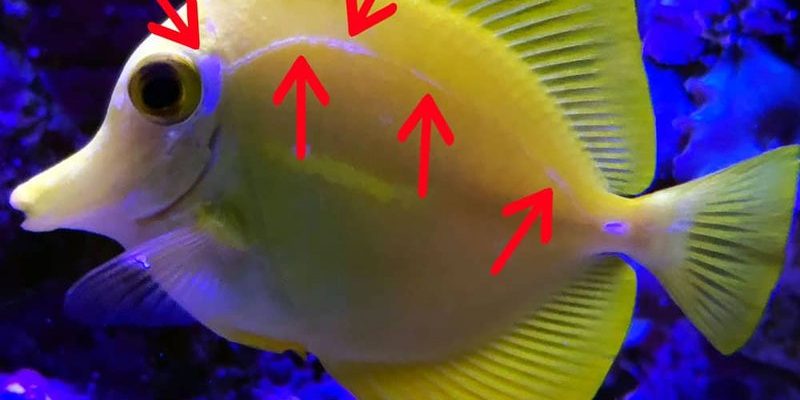
Think of your Yellow Tang as a delicate flower in a garden. While it may look strong and beautiful on the surface, it’s essential to provide the right environment and care to help it thrive. This article will dive into the most common health problems faced by Yellow Tangs and offer practical solutions to keep them in tip-top shape.
Understanding the Yellow Tang’s Habitat Needs
Before diving into health problems, it’s crucial to know what your Yellow Tang needs to feel at home. These fish come from the tropical waters of the Pacific Ocean, where they enjoy warm temperatures and plenty of space to roam. A well-maintained tank should mimic these conditions as closely as possible.
Here’s the thing: Yellow Tangs can grow quite large, reaching up to 8 inches long. Therefore, a minimum tank size of 75 gallons is recommended. The tank should be well-filtered and have plenty of live rock for grazing and hiding. This setup not only provides a sense of security but also encourages natural behaviors.
In addition to space, water quality is vital. Regular checks of temperature, pH, ammonia, and nitrate levels can help you maintain a healthy environment. Keeping the water clean can prevent a host of health problems down the line.
Ich (White Spot Disease)
One of the most common health issues faced by Yellow Tangs is Ich or *Cryptocaryon irritans*. It’s a parasitic disease that’s recognizable by the tiny white spots that appear on the fish’s body and fins, resembling grains of salt. You might be wondering what causes this annoyance.
Ich often arises in stressed fish, especially if they are newly introduced to a tank or if the water quality is poor. The stress weakens their immune systems, making them more susceptible to the parasite. So, how can you spot it? Look for increased scratching against surfaces, rapid gill movement, and lethargy.
To prevent Ich, quarantine any new fish before adding them to your main tank. Maintain excellent water quality and reduce stress by providing hiding spots. If Ich does occur, a separate treatment tank with medicated water can help treat your Yellow Tang effectively.
Fin Rot
Fin rot is another common problem that affects Yellow Tangs. It’s caused by bacteria that thrive in poor water conditions and can result in frayed or disintegrating fins. Imagine wearing a tattered shirt—it just doesn’t look good, right? Your fish feels the same way!
The first step in preventing fin rot is maintaining high water quality. Regular water changes and keeping ammonia levels low are crucial. Observe your Yellow Tang for any signs of injury or fin damage, as these can lead to bacterial infections.
If you notice fin rot developing, a good treatment is to improve the water quality and add a broad-spectrum antibiotic to treat the infection. Don’t forget to maintain a stable environment to prevent future outbreaks—think of it as providing a cozy, clean home.
Swim Bladder Disease
Swim bladder disease can be a real headache for both fish and their owners. It’s a condition that affects a fish’s ability to control its buoyancy. If your Yellow Tang starts swimming sideways or floating erratically, this might be a sign.
The causes can range from overfeeding to poor water quality. To prevent this annoying issue, make sure you’re feeding your Tang a balanced diet that includes seaweed, pellets, and occasional frozen foods. Keep an eye on portion sizes—think moderation!
If you suspect swim bladder disease, fasting your fish for a few days can allow its system to clear out. After that, gradually reintroduce food. Just remember to maintain a consistent feeding schedule to avoid the issue in the future.
Stress and Aggression
While they might look cheerful, Yellow Tangs can be quite sensitive to stress, and stress in fish can lead to a host of health problems. These fish can become aggressive, especially if they feel threatened or overcrowded. You might notice them nipping at other fish or hiding more than usual.
To help prevent stress, consider the tank’s social dynamics. Make sure there’s enough space and hiding spots for everyone. It’s also wise to introduce new fish slowly to minimize territorial disputes.
A calm aquarium environment not only helps your fish feel secure but also reduces the risk of stress-related illnesses. Think of it as creating a peaceful neighborhood for your aquatic companions.
How Nutrition Plays a Role
The importance of nutrition cannot be overstated when it comes to the health of your Yellow Tang. These fish are herbivores, meaning they thrive on a diet rich in plant matter. A balanced diet can help prevent many of the health issues discussed so far.
A high-quality flake or pellet food designed for herbivores can be excellent. You can also incorporate fresh seaweed or algae sheets. Make it a habit to provide varied diets, as this encourages healthy foraging behavior.
Here’s the thing: overfeeding can lead to serious problems like swim bladder disease or obesity. So, it’s best to feed your Tang small amounts several times a day rather than a large amount once a day.
Regular Health Checks
Monitoring your Yellow Tang regularly can make a huge difference in spotting issues early on. Just like a regular doctor’s visit for us, checking in on your fish can catch problems before they become severe.
Look for changes in behavior, appetite, and physical appearance. Changes in coloration, unusual swimming patterns, or the presence of sores can all indicate health concerns.
Creating a routine for tank maintenance, water testing, and observing your fish can help you stay on top of any potential issues. Think of it as a wellness check, ensuring that your little sunbeam stays bright and vibrant.
Caring for a Yellow Tang can be incredibly rewarding, but it comes with responsibilities. By understanding common health problems and how to prevent them, you can help your fish live a long, healthy life. An ounce of prevention truly is worth a pound of cure; keeping your tank clean, monitoring water conditions, and providing a balanced diet will go a long way.
So, the next time your Yellow Tang darts across the tank, remember that a little knowledge and care can ensure that it continues to brighten your underwater world for years to come. Enjoy the journey of fishkeeping, and may your tank be filled with vibrant health and happiness!

